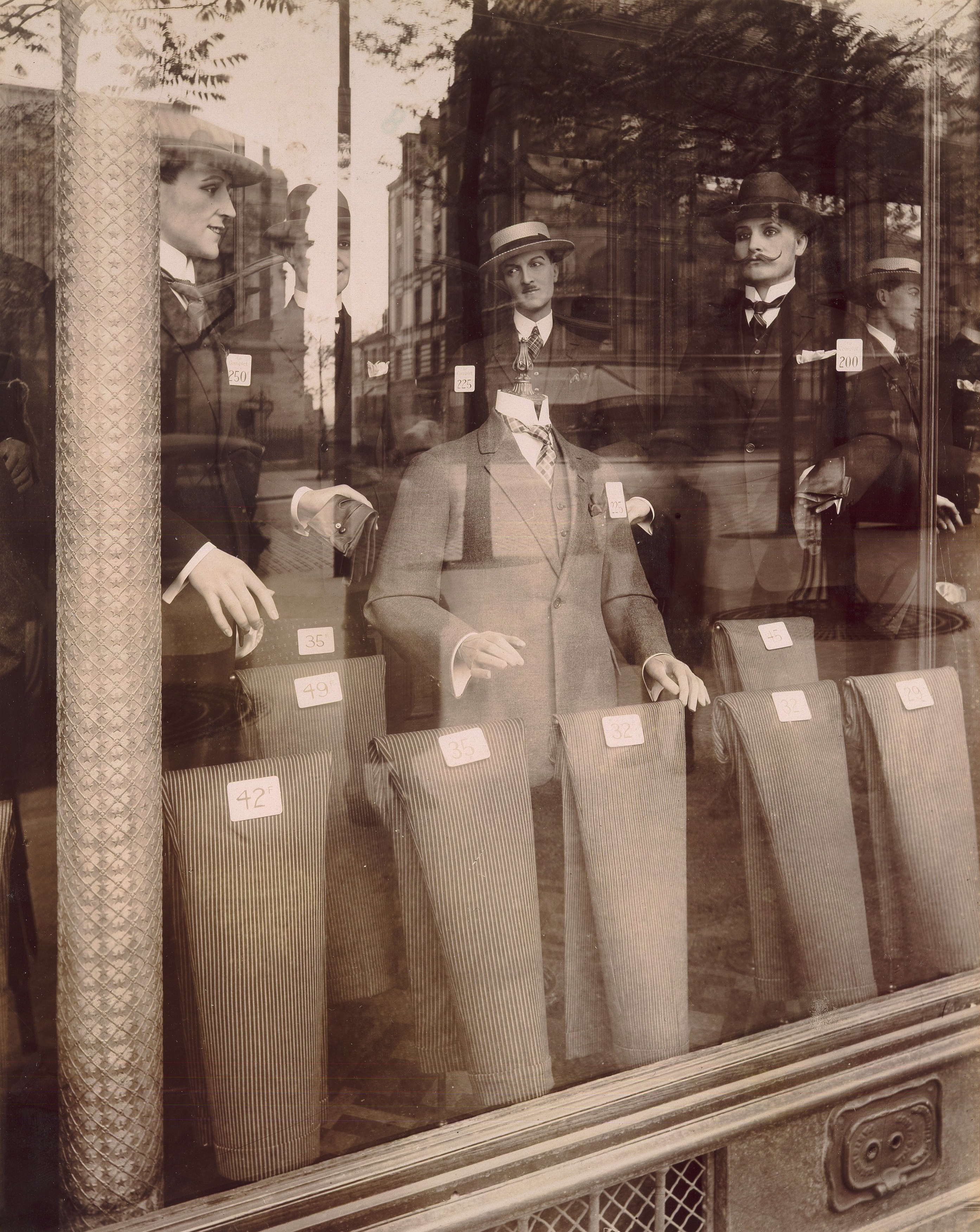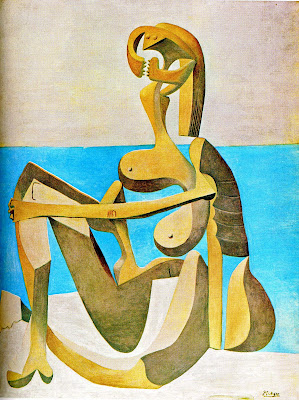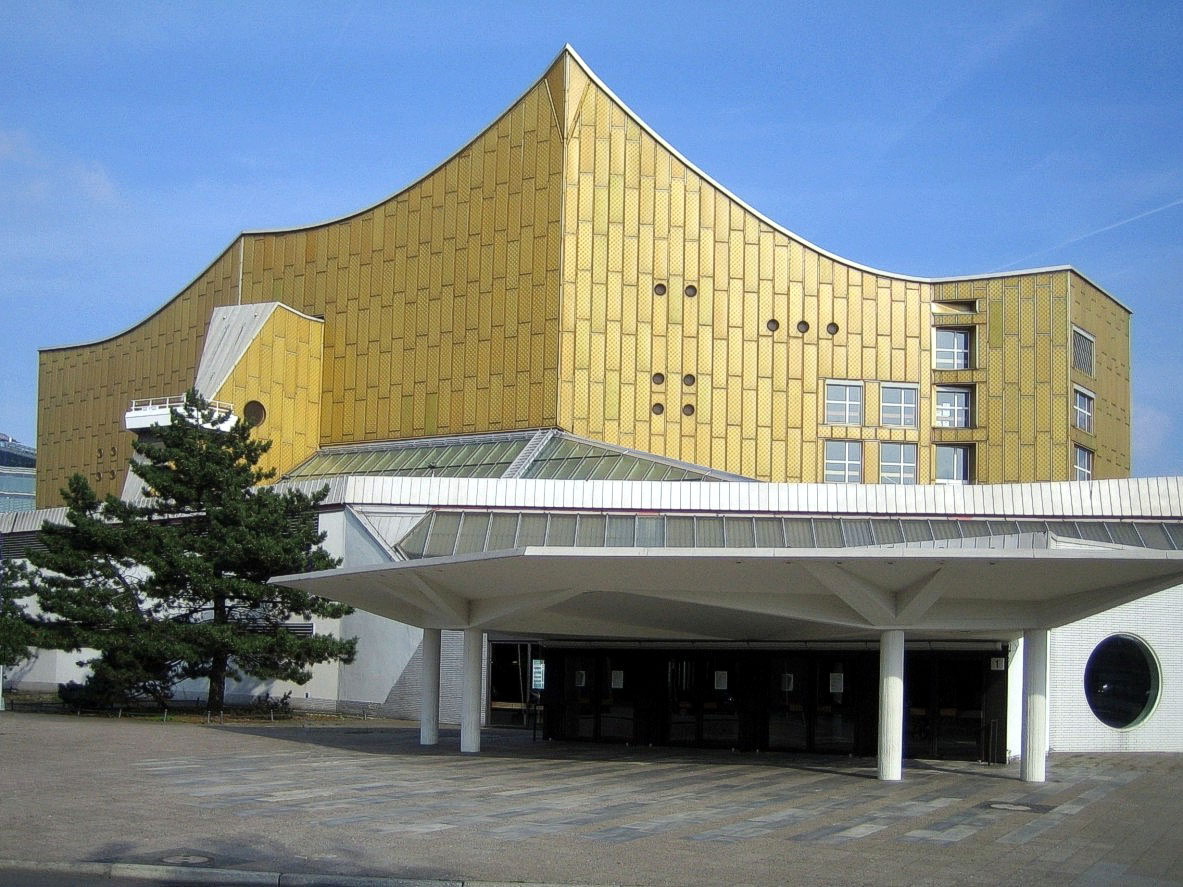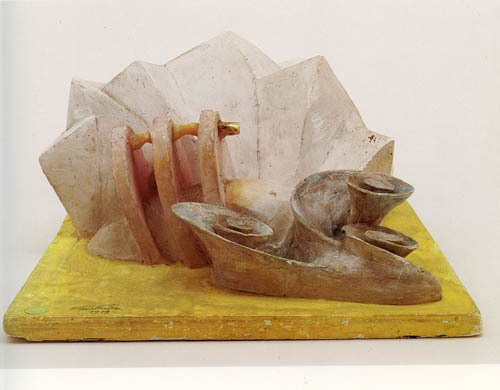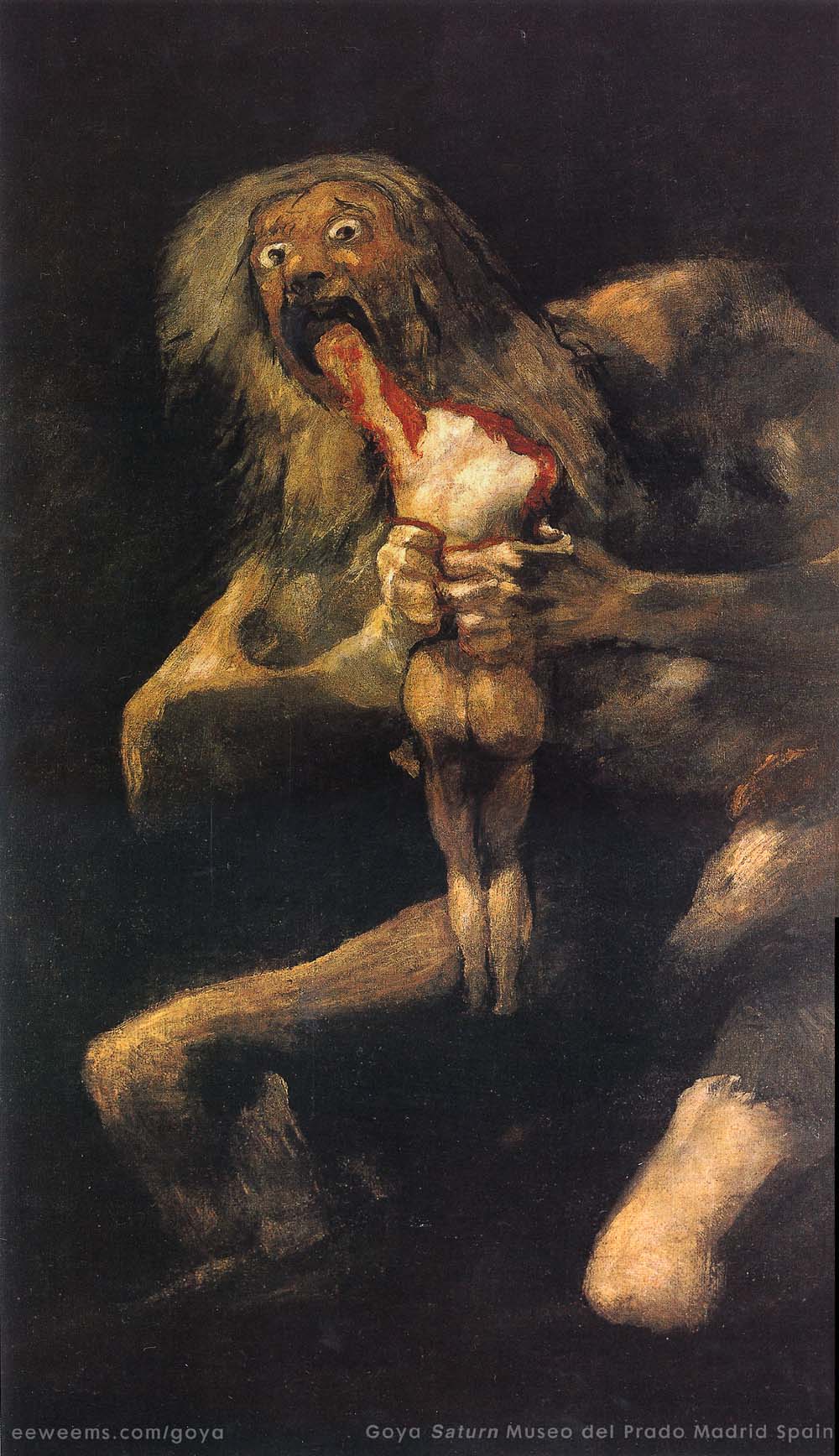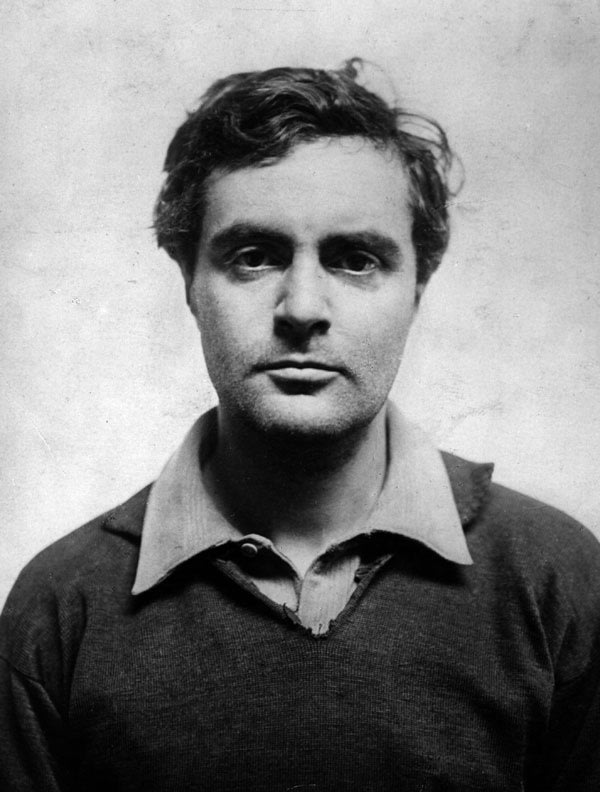Lewis Carroll's 'Alice in Wonderland' and 'Alice Trough the Looking-Glass' have been one of my favourite books since I was just a kid. Even though they're sometimes too disturbing and alarming, I just think they are some of the best tales in the world (doubtfully for kids, though). One could think that Carroll just got really high and started writing... I don't think he actually did, but in any way, Alice's adventures are just perfect, and Alice herself is, in my opinion, one of the most memorable characters (along with the Cheshire cat).
Tuesday, February 26, 2013
Erik Satie
I fell in love with Erik Satie's 'Gymnopedie No. 1' and now I can't stop listening to it... it's really relaxing. Somehow, I found this melody really familiar, although I acknowledge I didn't know anything about Satie before.
Surrealist Film
Surrealism in cinema is certainly a unique experience! I particularly liked 'Un chien andalou' by Luis Buñuel (such an honour that he had chosen Mexico for making a lot of his films). At first, I must admitted I was feeling a little unsatisfied because I thought I didn't understand it. However, I realized that it is Surrealism what I was seeing, and I remembered there's no point in looking for a meaning for it, it's just art! I think it is amazing how Buñuel and Dalí wrote this short film in such an automatic and imaginative way. How they could even come out with those ideas?! I think 'Un chien andalou' is a sublime masterpiece that I hope never gets forgotten with the years.
Viking Eggeling's 'Symphonie Diagonale' is also really interesting, and quite innovative by that time. Now, that movie could be perfect for those Windows sound media reproducers that just show patterns of shapes and colour when you're playing a song... who would think that that was art too?
"You're Surrealists, but I'm a normal guy..."
Surrealist Sculpture and Surrealist Photography
I think that both sculpture and photography are great mediums for Surrealism. It's quite simple: with sculpture, you can mold or shape any figure you want as you want it (it doesn't even have to be a real figure); there's no limit for your imagination. Similarly, with photography, the artist can decide what is he or she going to portray and how he or she is going to do it (angles, exposure, zoom, focus, effects), and even when they have their original photographs, they can also make compositions and impressive editions to them. Surrealist sculpture and photography somehow provide the same experience as Surrealist painting, and the results are great as well!
Some sculptures may be pushing to abstraction, but, in general, the Surrealist sculptures clearly refer to objects that you can recognize easily from real life but that still don't make any sense.
Some sculptures may be pushing to abstraction, but, in general, the Surrealist sculptures clearly refer to objects that you can recognize easily from real life but that still don't make any sense.
 |
| We can recognize a sort of backbone here! |
 |
| There's a human figure there, for sure, but it is kind of dreamy |
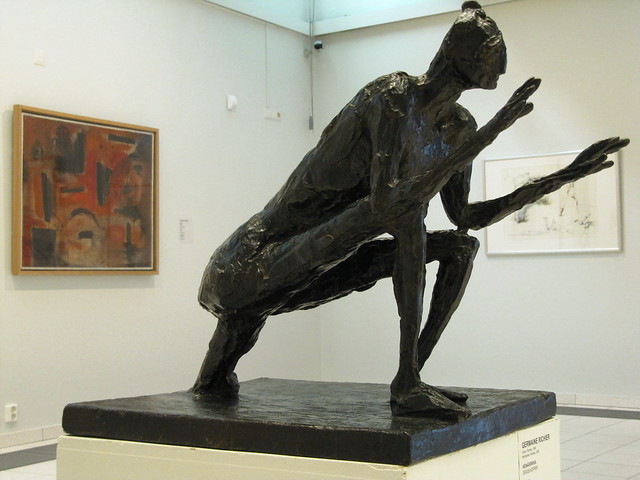 |
| A human grass hoper? |
In Surrealist photography I just loved the use of distortion mirrors and the assemble of objects and images that artists used. Of course, they were portraying objects and people that actually exists but that somehow seem unreal in the photograph... really magical!
 |
| I loved this 'nude' compostion! |
Monday, February 25, 2013
Pablo Picasso and Surrealism
Picasso's Surrealist period is really interesting in both his paintings and sculptures. It is noticeable the change of his style in his Surrealists paintings, but somehow I feel that there are still some inches of Cubism and other sryles in there. Certainly, this works aren't pure Surrealism, but they do fit this beloved movement. After today's class I just drew a conclusion that Picasso, just as Frank Lloyd Wright, doesn't follows any manifesto, rules or specific techniques... I think that Picasso doesn't do Cubism or Surrealism, Picasso just does Picasso, why would he do anything else? He is the man of the century!
Women and Surrealism
I hadn't really any Surrealist woman (apart from Frida Kahlo) until now. It's kind of a shame because their paintings are just fantastic! My favourites, however, are reduced to Dorothea Tanning and Kay Sage (It's funny that her husband Yves Tanguy rejected her as a Surrealist because I think Sage's paintings are way better than his). Tanning and Sage both give a mysterious and thrilling atmosphere to their paintings, they are alarming, and somehow disturbing, and they don't make any sense either but they are just so beautiful, and one can easily notice the high skills of these two women. Even though I feel proud of Remedios Varo, Leonora Carrington and Frida Kahlo, their paintings are not so aesthetically nor emotionally attractive to me... they're actually somehow depressive in a no delightful way. These women's paintings are really personal, and thus reflect the pain and dissatisfaction that, for example, Frida Kahlo had in her life.
By the way, Meret Oppenheim's design is just disturbing, I didn't like it a lot, but it is certainly Surrealist.
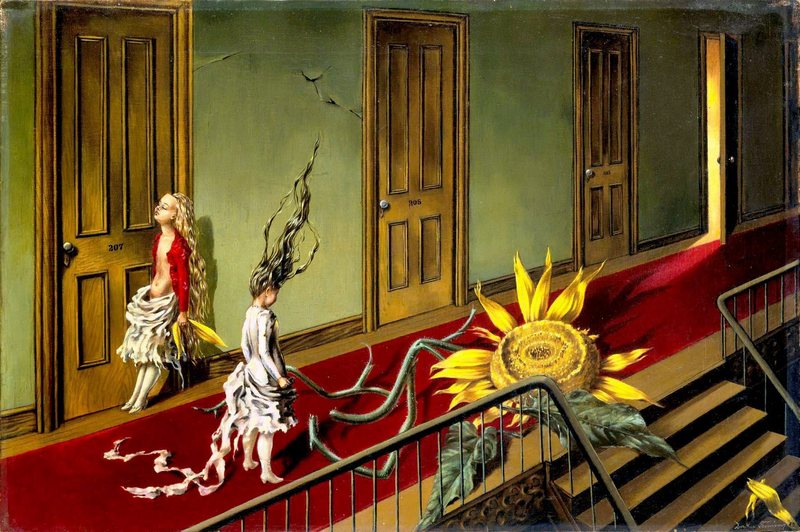 |
| Tanning's 'Eine Kleine Nachtmusik' |
 |
| Sage's 'Danger, Construction Ahead' |
Surrealism
Surrealism is just my favourite art movement of all art history (I think I have mentioned it before). For some reason, surrealism speaks to me in such a way that any other movement (although Art Nouveau is close to it). My favourite surrealists are by far Salvador Dalí and René Magritte (I've even painted some of their paintings myself -couldn't resist- and I have a huge poster of 'The Persistance of Memory' from NY), and luckily I was able to visit both of their museums in Figueras, Spain for Dalí and in Brussels, Belgium for Magritte. Both museums are just an overwhelming and sublime experience that just made me fall in love even more with surrealism. Dalí's museum in specific is delirious. Since you walk in and see that rainy taxi with a huge boat spilling painting above it, you know you have entered to an amazing and somehow silly and nonsense place, but that's just wonderful!
Although I did enjoyed a lot Max Ernst's, Andre Masson's, Paul Devaux's, Hans Bellmer's (really disturbing, by the way), Matta's and Wilfredo Lam's work, I'll always keep my three favourites: Dalí, Magritte and Miró.
Both Dalí and Magritte send me to a dreamy and mysterious places from which I can make wonderful stories; their work delight me greatly. Miró, on the other hand, always makes me happy: his paintings are cheerful, relaxing, and childish, and they just put a big smile on my face.
It's hard to describe my love for surrealism, but I can say both the subject-matters and the techniques all Surrealists painters used are marvellous... and the best part is that you don't have to figure a meaning for a painting... you just enjoy it! It's surrealism! Doesn't make any sense so why worrying about finding a factual meaning?! It's just great! I think Surrealism is the most creative and innovative movement, they basically invented everything and left anything for us to create now... I love them.
Here are some pictures on some crazy and interesting things of Dalí's museum (they let you take pictures here!) and Magritte's museam (I could only take pictures on the entrance hall)
 |
| Entrance to Magritte's Museum I |
 |
| II |
 |
| III |
 |
| A crazy design by Dalí (He made SO beautiful jewelry) |
 |
| Entrance to Dalí's museum |
 |
| Well, why not? Dalí wanted it there... |
 |
| His cript is under the museum |
 |
| This is the ceiling of a room of the museum! |
 |
| Picasso as seen by Dalí |
(I tried my best with photographs, but dark rooms are difficult)
Friday, February 22, 2013
Cubism - Pablo Picasso and Georges Braque
Cubism may not be the greatest artistic movement of contemporary art (my favourite movement of all art history is surrealism; Dalí and Magritte are like Gods to me, and I've even made some of their paintings myself), but still it makes up one of the most important and interesting parts of art history.
Pablo Picasso is certainly a model artist; he had this natural talent that not all painters had, and thus he created a lot of quite prolific, varied, and interesting works (I've made a couple of Picasso's too). When I was in Barcelona, we visited the little Picasso museum of the city in which they are basically exposed the early works of the Spaniard (although they had some paintings of this rose and blue period, and the series of 'Las Meninas'), and I must say that his first paintings are way different from his Cubist works that made him famous. I think Picasso shouldn't be judged only for his Cubist period, but for all his compilation of works.
I think playing with shapes, although it may seem easy, is one of the most demanding techniques of paintings, and being able to translate reality into a painting without portraying the objects exactly as they are is really difficult. When I painted Picasso, I could recognized it was really easy to copy, but actually coming out with the idea of using the colours and the shapes of each painting is something that only a few artists can achieve.
As I've said before, Cubism isn't my favourite artistic movement, but I shouldn't be underrated either.
| I painted this Picasso's |
 |
| Picasso's 'Musicians' - My favourite from him |
 |
| Miro's sculptures in Barcelona reminded of some Cubists sculptures! |
Thursday, February 21, 2013
Woyzeck - Wozzeck
If we're talking about the precursors of Expressionism in literature, we definitely should mention Buchner's 'Woyzeck'. This proto-Expressionist play can be defined in a single word: tragedy. The poor Woyzeck has nothing but his wife to keep him alive. He's despised and criticized the whole story (he's even the lab rat experiment of a doctor!), he has no money, neither a great job, and his 'unblessed' doesn't provide him any happiness either. Woyzeck has the shittiest life in the world, but at least he had his beautiful wife Marie. So, when he finds out she's been rather unfaithful with him, his whole world turns down... inside his mind he gets crazy, insane and desperate until he finds a solution for his suffering. However, his resolution didn't gave him any peace, and thus he decides to commit suicide in a 'purifying' way. During the whole play, we just read the despair and misery of Woyzeck... there's nothing but emotions here.
The opera Wozzeck keeps quite loyal to the original play (although the ending isn't specifically the same). Berg's mise en scène is, in my opinion, really successful. The actors and sopranos that play each one of the characters effectively portrayed the figures and personalities that we can read in Buchner's 'Woyzeck'. Moreover, I think that the backgrounds used during all the scenes just fit perfectly with what we, the readers, can imagine while reading the original play. Hats off to both Buchner and Berg.
Werner Herzog a version of his own if this tragedy as a film, but I haven't been able to watch it. Hope I do it soon.
Der Blaue Reiter - Lyonel Feininger and Paul Klee
I love how Feininger can range from straight line compositions to black and soft water colour paintings, or even cartoon designs! Personally, I prefer his straight line near-abstraction paintings because even though they can resemble to some real-life things, we can never know the actual meaning of them!
However, I liked much more the work of Paul Klee. Each of his paintings seems to me a masterpiece. The choice of the figures and the colours used are marvellous; everything just fits in the place! Of course, my favourite must be 'Cat and Bird' (otherwise, my cats will abandon me).
 |
| Feininger's 'Harbor Mole' |
However, I liked much more the work of Paul Klee. Each of his paintings seems to me a masterpiece. The choice of the figures and the colours used are marvellous; everything just fits in the place! Of course, my favourite must be 'Cat and Bird' (otherwise, my cats will abandon me).
 |
| Klee's 'Cat and Bird' |
Queen's Bohemian Rhapsody
I was listening to Queen's masterpiece 'Bohemian Rhapsody' while writing about Expressionism, and I just realized that this song is quite Expressionist itself! Both the lyrics and the melody transmit so many emotions that can depress and excite anyone at the same time! Certainly, Queen is not a contemporary of any of the real Expressionist, and I may be wrong, but I really think that 'Bohemian Rhapsody' -as well as 'I Want to Break Free'- is a great example of Expressionism in music.
Oskar Kokoschka
Kokoschka's paintings are not only grotesque and disturbing, somehow I found them really entertaining because you what to look at each inch of the piece to discover each element of the painting. At first glance, they may look as a messy compilation of nonsense figures, but if you look carefully into each of the paintings, you can find characters and objects that you didn't see before and give a whole new sense to the whole composition.
 |
| Kokoschka's 'Loreley' |
For example, while seeing 'Loreley' at a first and quick glance, you see a worried person in the sea... not that amazing at all. But if you keep looking at the details of the painting you will discover some other men struggling in the water, a sinking boat, a sort of lighthouse, some fire... and an octopus carrying a trident! These elements, specially the last one change your whole view and definition of the painting and you can even start imagining a story for it!
Independent Expressionists: Lovis Corinth, Paula Modersohn-Becker, Kathe Kollwitz and Ludwig Meidner
I think painting and drawing get really interesting when it comes to Expressionism. Expressionist painters usually don't have anything to do with one another if we're talking about the techniques, materials, and the subject-matters they use (although it seems they all like to make self-portraits). Moreover, sometimes even one single Expressionist artists' different works have no relation at all! (Unlike other painters that stick to the same style and technique their whole career -Monet, T.M.W. Turner, Morandi, etc.) However, the results are fantastic! Expressionists' works can be thrilling, alarming, disturbing, scary, depressing, dismal, blissful, or even carefree.
Corinth's portraits, for example, are somehow disturbing; he paints and draws himself as either a deformed and crazy-like person or as the death's pray.
 |
| Corinth's self-portrait |
 |
| Corinth's self-portrait |
Modersohn-Becker's protraits are much more happy and carefree. She seems to have a happy life, she's a satisfied smiling person!
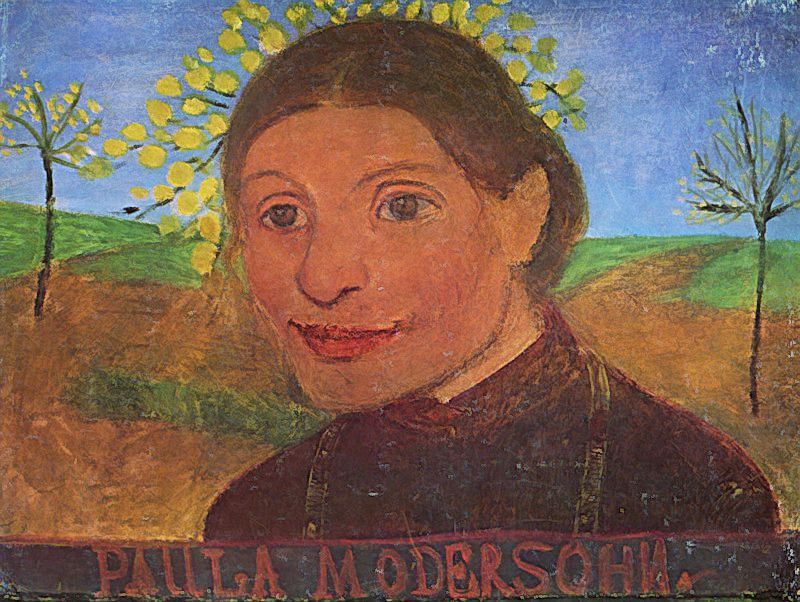 |
| Modersohn-Becker's portrait |
Kollwitz's portrait, on the other hand, is quite much more severe and serious. She looks like an old woman that has pretty much figure out life. She looks like a tired, yet powerful woman. She sort of remind me to Cabaret's Fräulein Schneider/Kost when she's singing the unforgettable song 'So What?'.
Kollwitz's drawings and sculptures are really impressive and REALLY disturbing; they perfectly fit the word 'sublime'
 |
| Kollwitz's protrait |
(Sara Kestelman as Fräulein Schneider in the 1993 London Revival of Cabaret
-with Alan Cumming as the Emcee-) (One of my favourite revivals)Expressionist Architecture
Unfortunately, I have to say to I think I didn't understand Expressionist Architecture; it simply didn't speak to me. I saw all the buildings, glass works and designs and they don't seem to be expressing anything to me. In fact, Art Nouveau expresses and transmits emotions way more than any of these Expressionist designs. For instance, I think Gaudí's Sagrada Familia is is the most Expressionist and touching piece of architecture I've ever seen in real life or in photographs. Nevertheless, this doesn't means I didn't like any of the Expressionist buildings. These are the ones I enjoyed the most:
Goya's 'Saturn Devouring His Son'
Goya's 'Saturn Devouring His Son' is one my personal favourite paintings (I'm actually painting it myself.. I only have the legs left but exams haven't let me finish it). I think this painting's composition is perfect: the contrast between the light and the dark and pretty much 'dirty' colours provides an alarming and sort of dream-like atmosphere, and the red of the blood although represented with just a few strokes, catches your eye immediately and completes the scene in a subtle and sublime and. However, I think that the most special feature of this painting is the look of Saturn; those eyes can make you have nightmares, and I can say is it really thrilling to paint them!... I think it is really obvious why this painting is consider to be a visual precursor to Expressionism.
Saturday, February 9, 2013
Silent cinema
I never imagined that early silent cinema could be so imaginative and have such astonishing visual effects (maybe they're not quite amazing comparing them to today's cinema, but considering that they are the first movies, they're just great).
Georges Melies's movie enchanted me. 'The Haunted Castle' is impressive and actually really funny and enjoyable to watch -that naughty Devil was delightful-. 'Voyage dans la lune' is for me a masterpiece: it is entertaining, funny, and sometimes ridiculous story that hypnotized me with his beautiful and pretty much unrealistic background sets.
When we saw impressionism in painting and literature I asked my dad if impressionism showed out in cinema too. Now that I saw that compilation of scenes of impressionist silent movies, I must say that I'm delighted by the delicacy of the photography and the creativity that was put into the screen with those movies; it is simply amazing and quite artistic.
Abel Gance's movies seem to be quite interesting for his innovative use of a lot of eye tricks, visual effects, and his genius photographic compositions. I would love to watch 'Napoleon' some of these days.
Les Maudits: Amadeo Modigliani, Claim Soutine, Suzanne Valadon and Maurice Utrillo
Modigliani is not only a legendary artist for his disturbing, short and somehow pathetic life, but for his portraits with long necks and nudes. Even though they are I really liked the long neck paintings and sculptures (I specially liked the sculpture because it seems to be an ancient African piece of art); I found them really innovative and pleasant to the eye. His nudes are realistic and pretty much beautiful, I didn't found them problematic or inappropriately realistic, but you can't please everyone, right?
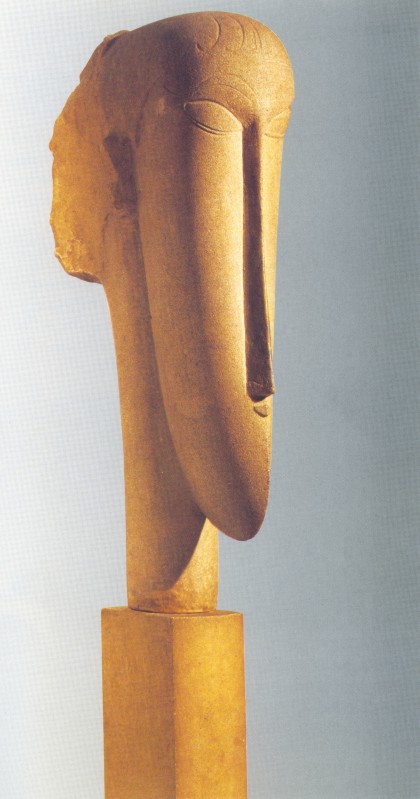 |
| Modigliani's 'Female Head' |
I think liked Soutine's food paitings even though they are made in such a marvellous technique that it really looks like the food will eat you and no the other way round, and with quite vivid oil painting colours I usually like. Nevertheless, I really liked his 'Plane Trees at Ceret' because of its abstract yet understandable style.
 |
| 'Plane Trees at Ceret' |
Suzanne Valadon's life of lovers sort of remind to Woody Allen's Midnight in Paris's character Adriana (Marion Cotillard), a women that had affairs with pretty much every great artist of her time. Now, talking about her paintings... well, I din't like a lot her nudes, they seem to lack of something, but her painting 'Two Cats' is great (that those cats resemble my cat Puma has nothing to do with it, not at all)
 |
| 'Two cats' |
Valadon's son Maurice Utrillo certainly has the most lovable paintings of the whole course, and he even chose the spots of Paris that I liked the most myself! His paintings are cute, calm, peaceful and delicate, a quite precise and remarkable brushwork with oil. Hats off to him! He's surely my favourite cursed painter! Though it is a shame that people with so much talent decide to basically kill themselves with alcohol.
 |
| 'Place des Abesses' |
Wild Men of Music: Igor Stravinsky
Stravinsky's 'The Rite of Spring' is surely a bizarre ballet composition. The dancers movement far from being pretty or delicate, are wild and strengtheners, and sometimes really weird. I really liked how the whole corps de ballet follows the two protagonist in each movement they made, and I think the audience can really feel the rare chemistry the soloists have during the whole number.
I think this ballet expresses too much energy, craziness and passion. It may look sometimes ridiculous for some people, but somehow I feel that every step the dancers make has a congruency that makes the whole number a perfect piece of contemporary dance.
 |
| Picasso's protrait of Igor Stravinsky |
I love Pina Bausch's choreographies, and this post reminded of her.
Madeline
I just loved to watched the 1952 Madeline cartoon. It reminded a lot of my childhood, when I watched Madeline on the T.V. every time Disney Channel showed it (of course it wasn't the 1952 version, but the 1990s one).
1952 Madeline cartoon features not only one my favourite character of all time, but a great single animation style that indeed reminds us to Raoul Dufy's paintings, especially 'Belles Choses'.
 |
| Dufy's 'Belles Choses' |
 |
| Ludwig Bemelmans's Madeline |
Subscribe to:
Posts (Atom)


